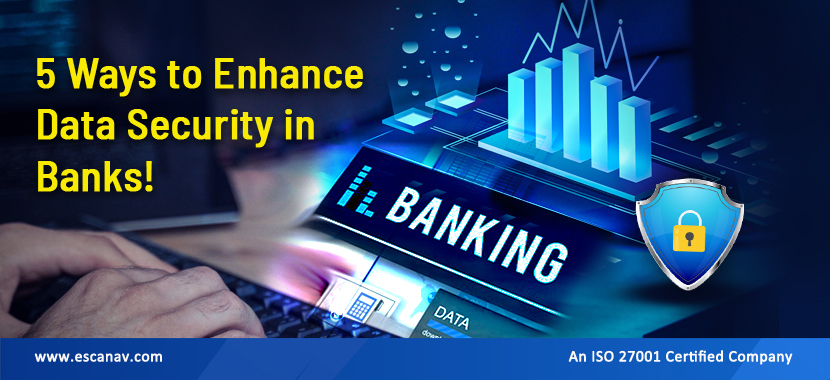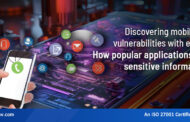As we all know, financial institutions have existed for centuries. Although the way we bank has changed considerably, the basic principles remain the same. Personal and financial information about their customers has always been a large part of the banking industry. The ease with which these data can now be accessed has led to the need for robust cybersecurity measures.
Since the emergence of financial technology a few decades ago, many innovations and changes have taken place, including wire transfers, credit cards, online banking, and mobile payments. It has been necessary for banks to not only upgrade their systems to accommodate these changes but also transform their processes to ensure continued security. In today’s world, it is also vital to protect sensitive data and implement security measures to avoid attacks by cybercriminals, including phishing and malware attacks.
According to the requirements imposed by modern banking systems, banking regulations are constantly evolving. Keeping customer data safe and protecting it from cyberattacks and unauthorized access is the responsibility of banks. This article will examine how modern banks and financial service companies fulfil this responsibility.
Banks’ Best Practices on Data Security
Ensure that a data breach does not occur either internally or externally by taking a 360-degree approach to data security. Besides securing customer-facing processes, this also involves securing internal processes related to employees, vendors, and systems. Data security in the banking industry can be achieved by following these five tips:
1. Authentication
Every transaction in the bank must be authenticated by verifying the identity of the person initiating it. It applies to customers using online or mobile banking systems, to those visiting the bank in person, or to those using credit/debit cards at POS terminals or ATMs. Employees of banks who have access to customer data are also subject to this law. In contrast to earlier authentication methods that simply required an ID and a password or PIN, many banks now use two-factor and multi-factor authentication methods to verify that a person is in fact who they claim to be. Behavioral biometrics are also used by banks to verify customers’ identities when they interact with banking systems such as Interactive Voice Response (IVR). In addition to its overall information security strategy, this is an essential component
2. Audit Trails
There was always a record of banking transactions available as a statement or passbook. Additionally, banking systems maintain an audit trail for every event that takes place during a customer’s interaction with the system. In the event of a security breach or ransomware attack, this is crucial for quickly responding. Whether a customer uses phone banking or online banking, the time and details of the interaction are recorded. The data is backed up daily and archived at defined intervals, but it is never completely purged. Part of the audit trails includes maintaining a response plan for security incidents.
3. Secure Infrastructure
Data infrastructure, including database systems and servers, and the boundaries established to protect them, constitute secure infrastructure. In any core banking system, production data is usually encrypted. Production systems are restricted to authorized providers, with only authorized personnel handling critical infrastructure. Securing these databases requires effective access management. For testing, important data such as bank account numbers, customer names, and addresses must be masked. Infrastructure vendors are generally different from those who deal with applications. Bank employees are usually given special equipment where access to social websites, personal emails, and USB ports are blocked. Employees can only access the banks’ network over a VPN when using public WiFi.
4. Secure Processes
The banking industry has established many processes to ensure the security of its systems is implemented and tested. The company may update Know Your Customer (KYC) information for its customers, implement Non-Disclosure Agreements (NDAs) for its employees and vendors, and secure special zones within its facilities and remote data centres.
By implementing Data Loss Prevention (DLP) solutions, banks can mitigate insider threats and protect customer data like names and credit card numbers. Additionally, these solutions can help meet the compliance requirements of data protection regulations like PCI DSS and GDPR, ensuring that a bank’s security meets consensus standards and protects its customers’ information.
As part of the implementation process, global and local regulations are addressed, and risk assessments are conducted to ensure compliance.
5. Continuous Communication
As part of regular communications with customers, banks also inform them about system upgrades and new authentication procedures, as well as sending them periodic account statements. Additionally, customers can set limits and alerts according to different conditions to ensure that they are informed if any unexpected activity occurs. Multiple channels of communication are available, but the set-up can be customized to suit the needs of customers.
Strengthening Data Security with eScan Endpoint Protection
Keeping your bank’s financial and personal information secure can be achieved by following these five tips. In addition to deploying various security solutions, it is also important to ensure the security of customer data. eScan’s Endpoint Protection by eScan provides comprehensive DLP solutions designed to meet the unique challenges faced by both banks and the broader financial industry.
Data breaches at endpoints can lead to operational disruptions, regulatory issues, penalties, and reputational damage. With eScan Endpoint Protection, sensitive data, such as customer personal information and payment information, is continuously monitored and controlled so that malicious, negligent, or compromised users are prevented from committing insider threats.
In addition to its advanced OCR capabilities, eScan Endpoint Protection also has several other features that make it stand out. Using this technology, banks can accurately scan and monitor a wide range of file types found in images and scanned documents. As a result, it ensures comprehensive data protection and facilitates compliance with financial regulations by detecting sensitive data in formats that server-based OCR solutions might overlook.







